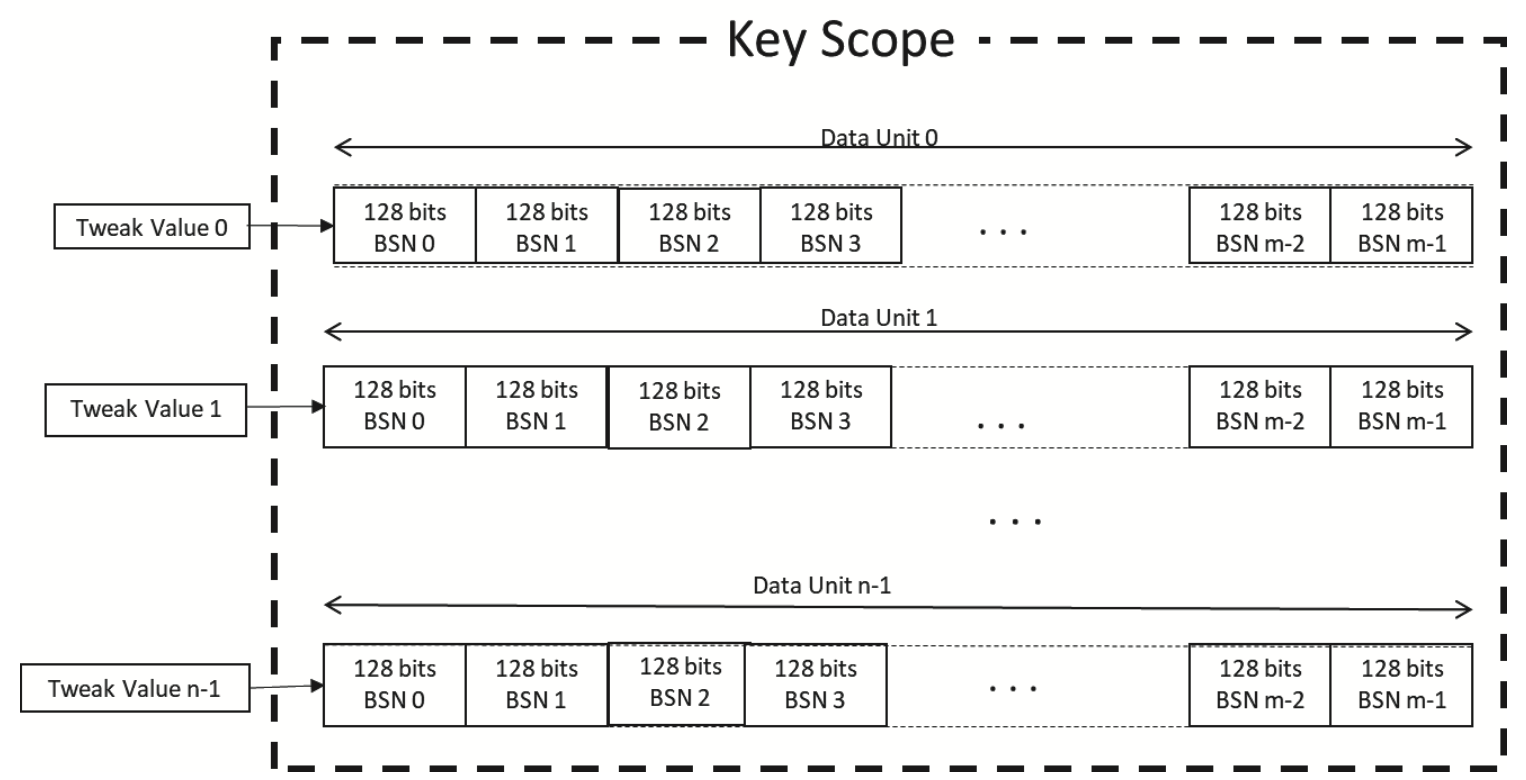IEEE 1619
Things to Remember, that I keep forgetting:
- A Data Unit can be many 128-bit blocks (the standard says up to \(2^{20}\) to be precise), but a single Data Unit has a single Tweak.

The Data Unit number is an input into the algorithm (where does this happen in the assembly??).It doesn’t. See below.
🧠 Insight
The standard generates the tweak from the sector / Data Unit
Number, but OpenSSL does not do this, it treats the Tweak as a random
nonce/iv and encrypts it via $key2. I think the insight here is that it
makes OpenSSL’s implementation more general purpose by making the
initial tweak independent of key 2.
The implication of this is that a call to an XTS cipher in OpenSSL et al. is always on a single Data Unit.
Cipher Stealing
- Steal enough bytes from the last complete cipher text block for our remaining bytes to make up a complete AES plaintext block.
- Encrypt this block.
- The last complete cipher text block is replaced with this new, now complete, block.
- the unstolen bytes from the previously last complete block are then tacked on to the end as the remainder.